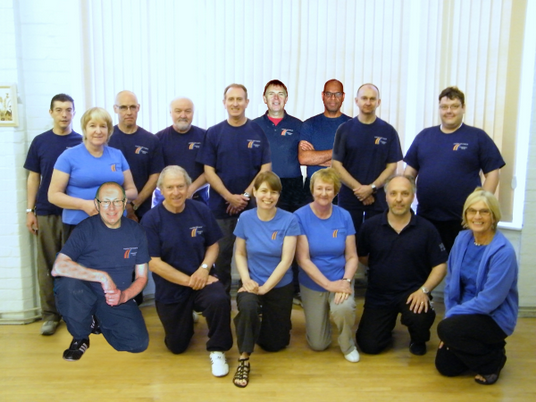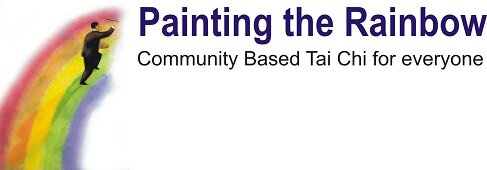About us
ORIGINS OF PAINTING THE RAINBOW (PTR)
PtR came into existence on the basis of the 2 factors below;
- I had been practising Tai Chi for around 20 years and my husband Mark Peters is a founding member of the Kai Ming Tai Chi Association (www.kaiming.co.uk)
- Drawing on our joint knowledge Mark had become deeply involved in rehabilitation programmes within the NHS for Cardiac patients, people with COPD in addition to providing specific falls prevention training for staff within the caring sector.
As a State Registered Nurse I had worked in various roles within the Health Service for around 40 years. The last 25 as a Practice Sister for a General Practitioner within the community.
Kai Ming has many main stream tai chi classes for the general public in Birmingham and across the Midlands, and the health benefits to the practitioners have been noticeable over the years. (Our book “A view from the back of the Class” was published last year containing personal stories from many of these practitioners).
However as a nurse I became aware of the many client groups who because of varying circumstances where excluded from attending the evening main stream classes.
I gave this a lot of thought and then sat down with Mark and again we pooled our specialised knowledge to put together a programme for this client group.
It had to be suitable for ALL levels of ability, and we where very conscious of the financial implications for many of the community groups who would benefit from what we could offer.
It took us a year to ready our instructors for PtR - we already had 23 fully qualified instructors within our sister organisation, Kai Ming, who taught general tai chi classes across the Midlands so we called a general meeting with them put forward our ideas for the formation of PtR and asked who would be interested in spending a year on further training that would focus on tai chi for rehab and chronic medical conditions.
The training involved not just the special exercises for specific groups but also workshops that looked at the various medical and physical conditions they might meet in the course of their outreach classes, plus how to deal with problems that may arise from this. To this end, all instructors have up-to-date CPR certificates. As an organisation we have all the relevant policies in place e.g. health & safely, risk assessments, vulnerable adults etc.
We chose carefully from our main stream instructors for their personality and ability; they also had to be available during the day. This meant they are all people who really show a dedication, and empathy with the groups they would be working with.
Working with the NHS, we ran a pilot study for cardiac rehab patients (phase 3 & 4) which gave excellent outcomes resulting in the first even NHS funded Tai Chi for rehab DVD; this DVD is free to all cardiac rehab patients. This fed into the pulmonary rehab program (COPD) where we provide sessions on tai chi (exercise) and NLP/CBT (anxiety management); we are smashing the national average of 75% patient retention with a 90% plus retention since we started in 2009. Using tai chi as an alternative to circuits has proven very successful as patients enjoy it more and we are increasing their heart rates to 120bpm without de-saturation.
We are still striving to obtain funding that would enable us to cover instructor’s costs so that we could deliver our classes, without a charge, to service users who are not in the financial position to take advantage of PtR.
Until we are successful the charges are kept to the minimum and the instructors are self employed, covering all their own costs and tax.
It is very motivating for Mark and myself that we have had such encouraging feedback from the classes now run by PtR from clients and managers.
If you know of any funding or sponsorship we could apply for PLEASE let me know, as a nurse I am used to begging for money and am very committed to this project becoming a FREE SERVICE.
Here is our team of Instructors, including Mark & myself

